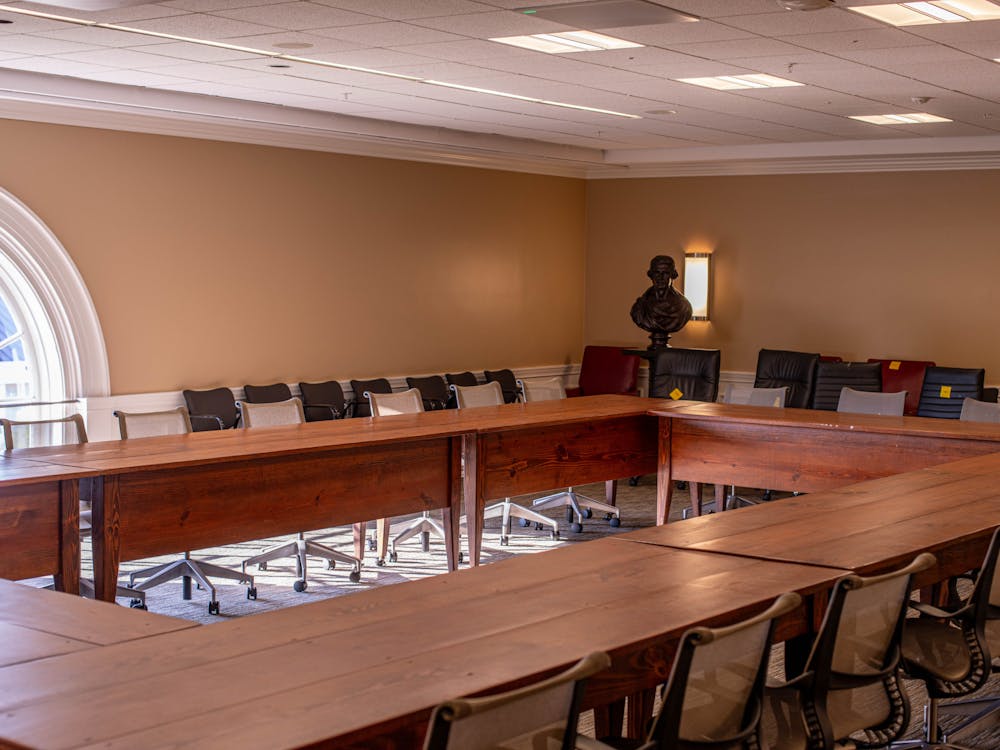A group of Architecture students recently presented its findings to the Piedmont Housing Alliance regarding which areas in the City of Charlottesville and Albemarle County have experienced the greatest number of foreclosures in the past two years. PHA plans to use the information in an attempt to counteract local foreclosures.
So far, the fourth-year students in PLAC 401, “Neighborhood Planning Workshop,” have created a database about foreclosures spanning from June 2006 to September 2008 using information compiled from foreclosure Web sites, classified ads in The Daily Progress and calls to PHA from residents who are delinquent in their mortgage payments, said Nisha Botchwey, urban and environmental planning assistant professor.
Each student in the class researched research trustee sales and auctions that indicated foreclosures listed in The Daily Progress throughout a two-month period, said fourth-year Architecture student Sarah Bridger, who is enrolled in the class.
Students then used the database to map out the “hot spot” areas where foreclosures occur most often in and around Charlottesville, Botchwey said. She added that there was “a great deal of analysis” that occurred, including analyzing affordability, race and even car data. Students presented this aspect of the project to PHA last week, she added.
Karen Reifenberger, PHA Fair Housing and Special Projects director, said PHA aims to educate home-buyers about financial literacy to prevent people from getting into trouble.
Reifenberger said the students’ data showed several areas in Charlottesville have been more affected than others by foreclosures. The most affected areas included Fifeville, Star Hill, Belmont, Ridge Street and the area around 10th Street and Page Street, Botchwey said.
The number of foreclosures in Charlottesville and Albemarle County spiked in February 2008 at 35, Botchwey said, and since then has seemed to decrease and then level off, with 12 foreclosures in September 2008. Reifenberger noted that the spike may have been caused by inappropriate loan procedures and declining house values.
Botchwey said Charlottesville has a 2.1 percent rate of foreclosure for the two-year period covered by the class’ data. Architecture Prof. Bill Lucy explained this rate is fairly low, adding that states such as California, Nevada, Florida and Arizona have been hit particularly hard by the current financial crisis because the income in these states is not high enough to support the high housing values.
Reifenberger noted that the database gives PHA “the ability to focus education and outreach efforts to prevent foreclosures.” She also said the information compiled by the class will help PHA in its efforts to educate elected officials and other local authorities so they can make informed policy decisions regarding housing and foreclosures.
The second part of the semester-long project will involve predictions about where future foreclosures may occur and analysis of housing policies that might affect foreclosed properties, Botchwey said.
“We’ll look at policies across the nation to see what best practices exist and see how we can improve here in Charlottesville,” Botchwey said.
Bridger said after presenting the current data to PHA, the students have a better idea of what information is most useful to the organization. The next step, she said, is to “polish the data we found.”
Botchwey said she became interested in doing this project because students from last year “indicated that they weren’t sure how to respond as planners” to the recent high levels of foreclosures affecting communities. She said she applied for and was granted an academic community engagement fellowship through the provost’s office to fund the project.
Reifenberger noted that the results of the students’ findings will be very useful for PHA.
“It’s excellent that a University class is doing something so useful and practical for the community,” she said.






